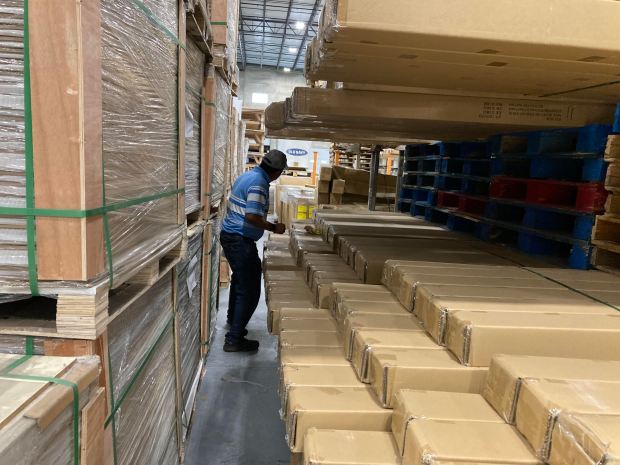WASHINGTON — President Donald Trump will sign an executive order Tuesday to relax some of his 25% tariffs on autos and auto parts, the White House said, a significant reversal as the import taxes threatened to hurt domestic manufacturers.
Automakers and independent analyses have indicated that the tariffs could raise prices, reduce sales and make U.S. production less competitive worldwide. White House press secretary Karoline Leavitt said at a Tuesday briefing that Trump would sign the order later in the day but declined to provide details on the order.
Treasury Secretary Scott Bessent, who joined Leavitt at the White House briefing, said the goal was to enable automakers to create more domestic manufacturing jobs.
“President Trump has had meetings with both domestic and foreign auto producers, and he’s committed to bringing back auto production to the U.S.,” Bessent said. “So we want to give the automakers a path to do that, quickly, efficiently and create as many jobs as possible.”
The administration will offer automakers that finish their vehicles domestically a 15% rebate this year, offsetting the cost of the tariffs. That rebate would be 10% the second year, giving the automakers some time to relocate production of parts outside the country to the United States, a senior Commerce Department official said on a call with reporters to preview the executive order. The rebates would be available to domestic and foreign companies with auto plants in the U.S.
Stellantis Chairman John Elkann said in a statement that the company appreciates the president’s tariff relief measures.
“While we further assess the impact of the tariff policies on our North American operations, we look forward to our continued collaboration with the U.S. Administration to strengthen a competitive American auto industry and stimulate exports,” he said.
General Motors CEO Mary Barra said the automaker is grateful for Trump’s support of the industry, and she noted the company looks forward to conversations with the president and working with the administration.
“We believe the President’s leadership is helping level the playing field for companies like GM and allowing us to invest even more in the U.S. economy,” Barra said in a statement.
But changing direction doesn’t help an industry that thrives on stability, said Sam Fiorani, analyst at business forecasting firm AutoForecast Solutions.
“Finding a way to get the auto industry back working has to be paramount in this,” Fiorani said. “The tariffs have not looked at this industry, the way it works, and expect it to be able to jump and relocate production at the blink of an eye. It just doesn’t work that way.
“Making a production change for vehicle manufacturing takes minimum, months, and usually years, along with hundreds of millions if not billions of dollars,” he added. “And so it is not something that they take lightly.”
The Wall Street Journal first reported details of the order, saying it also involves changes in how the import taxes would be enforced to prevent multiple tariffs from being charged and reducing tariffs on parts imported to make autos domestically. The changes would also be retroactive.
The tariffs imposed by Trump were seen by some as an existential threat to the auto sector. Arthur Laffer, whom Trump gave the Presidential Medal of Freedom to during his first term, said in a private analysis that the tariffs without any modifications could add $4,711 to the cost of a vehicle.
New vehicles sold at $47,462 on average last month, according to auto-buying resource Kelley Blue Book. Tariffs stress the automotive supply chain, a complex web which spans the globe. Not only do many auto parts cross North American borders several times before being assembled into a finished vehicle, auto manufacturers rely on suppliers around the world for thousands of components.
Increased levies would certainly cost new car buyers — sensitive to inflation — more, driving them to the used vehicle market and quickly straining the availability of pre-owned cars. Tariffs also impact the cost of owning and maintaining a vehicle.
The modifications come as Trump marks 100 days back in the White House by going to Michigan, a state defined by auto manufacturing. Trump won the state in last year’s election by promising to increase factory jobs.
Still, it remains unclear what impact Trump’s broader tariffs will have on the U.S. economy and auto sales. Most economists say the tariffs — which could ultimately hit most imports — would raise prices and slow economic growth, possibly hurting auto sales despite the relief that the administration intends to offer on its previous policies.



